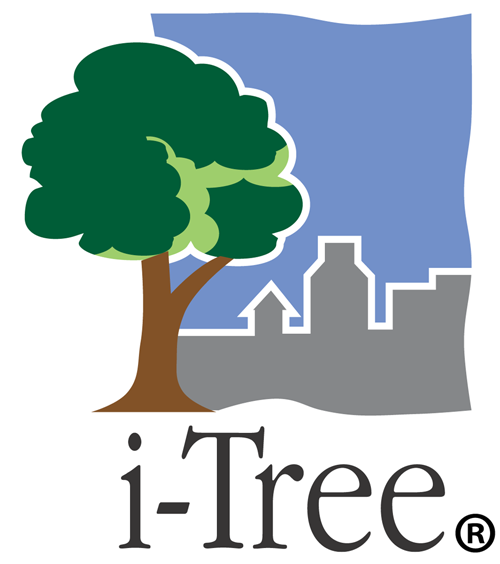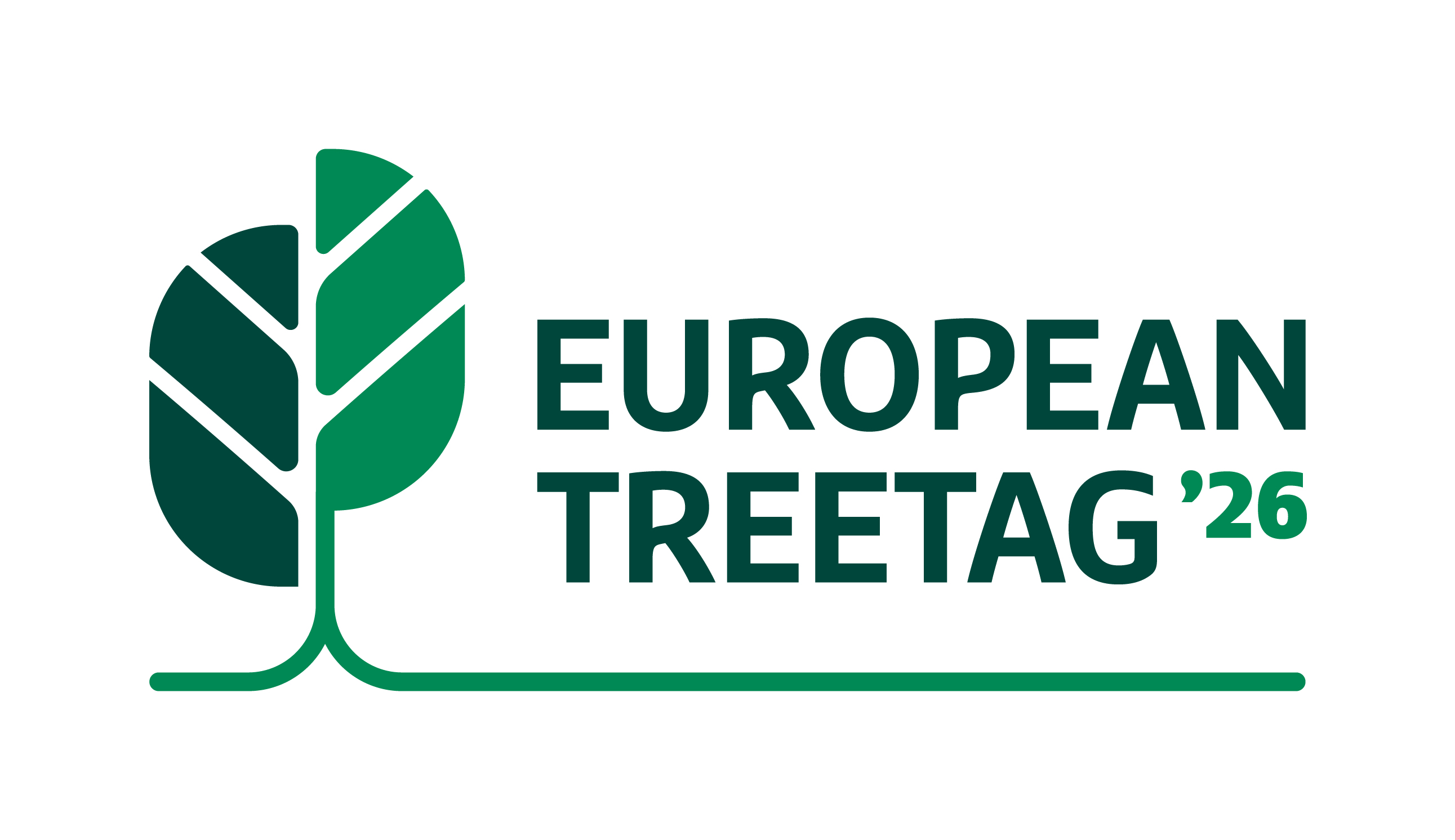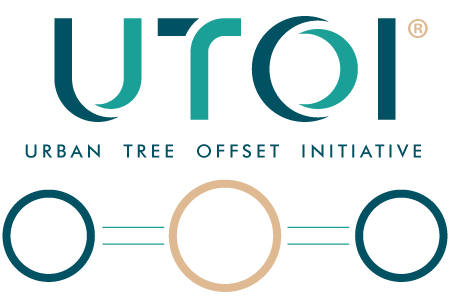Let's do a campaign for the trees!!! They are important!
Trees provide us with many services, such as cooling, water retention, biodiversity, and oxygen production. It is important that everyone understands the value of trees in our environment. To inform society about the benefits of trees 12 organisations from 9 different countries, organized a European TreeTag campaign on September 19, 2024.
On one day, TreeTags were hung on trees across Europe with information about that specific tree. What is its size? What species is it? And what benefits does it provide? Each tree was posted on social media and this website. Additionally, press releases were sent out about the tagged trees. This generated a lot of attention across Europe for the importance of trees!
Join us in September 2026!
The next campaign will be organized in September 2026. Would you like to participate? Contact us via the button above!

The Benefits of Urban Trees
In our cities and towns, urban trees are an essential element for the health and well-being of all urban inhabitants. While trees' aesthetic value is evident, the scientifically documented ecosystem services they provide are multi-layered and crucial to quality of life. From improving air quality to enhancing mental well-being, urban trees are indispensable in the creation of sustainable, healthy and liveable cities.
By understanding and appreciating the multifaceted benefits of urban trees, we can better advocate for their preservation and integration into urban planning and management that supports their accommodation, protection and conservation for long term growth.

Air quality improvement
Urban trees act as natural air filters. Through the process of photosynthesis, they absorb carbon dioxide (CO₂) and release oxygen (O₂), storing the carbon in their tissues as they grow. Trees also remove particulate matter (PM), and other pollutants such as sulphur dioxide (SO2), carbon monoxide (CO), nitrogen dioxide (NO2) and ozone (O3), which are known to cause serious respiratory problems. Studies have shown that urban forests can reduce air pollutant levels by up to 60%, leading to cleaner, healthier air for us all.
Water Management
Urban trees contribute to effective water management by intercepting rainfall, reducing runoff and increasing permeable landscapes. Their roots enhance soil structure, improving infiltration, reducing erosion and increasing water holding capacity, while improving filtration and infiltration rates and recharging groundwater. By slowing down water flow, trees help mitigate the risk of floods and maintain the integrity of urban waterways. Additionally, they play a vital role in filtering pollutants from rainwater, thus protecting water quality.
Trees do more!
CLIMATE REGULATION
Trees play a crucial role in regulating the urban environment, delivering services that regulate solar radiation, wind speed, ambient air temperatures, relative humidity and re-radiation from paved areas. They provide shade, lowering temperature under their canopy and reducing the heat island effect commonly observed in cities. This effect, caused by concrete and asphalt absorbing and re-radiating heat, can elevate temperatures significantly. A single mature tree can transpire up to 100 gallons of water on a hot day, which also cools the air as it evaporates. Consequently, neighbourhoods with abundant mature tree cover can be several degrees cooler, reducing the need for air conditioning and lowering energy costs.
BIODIVERSITY AND HABITAT
Each and every urban tree is a biodiverse universe. Urban trees support biodiversity by providing habitat for various species of birds, insects, and small mammals. This biodiversity is essential for ecological balance and contributes to the overall health of the urban ecosystem. The presence of diverse species also enhances the resilience of the ecosystem to environmental stresses and changes.
PSYCHOLOGICAL AND SOCIAL BENEFITS
The presence of trees in urban areas is linked to numerous psychological and social benefits. Green spaces have been shown to reduce stress, improve mood, and enhance overall mental health. They offer a respite from the hustle and bustle of city life, providing a sense of “place” while offering spaces for social interaction and bonding, relaxation and recreation. Studies have found that people living in areas with more green spaces report higher levels of well-being and lower levels of anxiety and depression.
ECONOMIC VALUE
The economic benefits of urban trees are substantial. Properties with trees and green spaces tend to have higher real estate values. Businesses in tree-lined areas attract more customers, and employees working in greener environments report higher job satisfaction and productivity. Moreover, the ecosystem services provided by trees, such as air and water purification, climate regulation, and flood control, save cities millions in infrastructure and healthcare costs.

Methodology
The benefits displayed for each of the trees we have assessed and tagged are based on i-Tree Eco quantification of the Ecosystem Services trees deliver. I-Tree is a state-of-the-art suite of peer-reviewed freeware tools, designed to assess and analyse tree structure and function as a basis for determining the Ecosystem Services benefits that trees provide.
i-Tree was developed by the USDA Forest Service, in collaboration with numerous cooperators. Originally developed for and implemented in the USA, it is now available globally and is presently being used by thousands of communities, non-profit organizations, municipalities, Urban Forestry professionals as well as volunteers and students.
The resulting data output from these assessments can greatly facilitate and improve the planning and management of our critically important urban tree resource and the landscapes they populate for their long term growth and human well-being.
To realize the outputs and provide this quantification information, data must be collected in the field from each and every tree included in a project. That field data and the procedures used to collect the data are described in the i-Tree Eco Field Guide.
To learn more about i-Tree and for further information about i-Tree and all the resources – manuals, videos, project descriptions and support documents, please visit the i-Tree tools website












